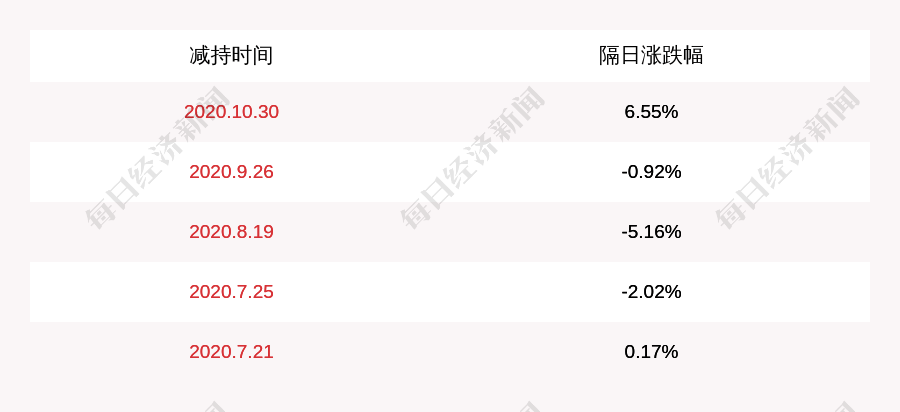2.3.1channelдёәд»Җд№ҲжҳҜ并еҸ‘е®үе…Ёзҡ„пјҹгҖҗдёҖж–ҮжҗһжҮӮGoйҖҡйҒ“гҖ‘еӣ дёәеҒҡж“ҚдҪңд№ӢеүҚпјҢйғҪдјҡе…ҲиҺ·еҸ–е…ЁеұҖй”ҒпјҢеҸӘжңүиҺ·еҸ–жҲҗеҠҹзҡ„жүҚиғҪиҝӣиЎҢж“ҚдҪңпјҢдҝқиҜҒдәҶ并еҸ‘е®үе…Ё гҖӮ
2.3.2еҗҢжӯҘйҖҡйҒ“е’ҢејӮжӯҘйҖҡйҒ“жңүе•ҘеҢәеҲ«пјҹдҪҝз”Ёзҡ„еә•еұӮж•°жҚ®з»“жһ„гҖҒж“ҚдҪңд»Јз ҒйғҪжҳҜдёҖж ·зҡ„пјҢеҸӘдёҚиҝҮdataqsizзҡ„еҖјдёҚдёҖж ·пјҢдёҖдёӘдёә0пјҢдёҖдёӘдёәжӯЈж•° гҖӮ
2.3.3йҖҡйҒ“дёәдҪ•дјҡйҳ»еЎһеҚҸзЁӢпјҹеҪ“йҖҡйҒ“е·Із»Ҹж»ЎдәҶпјҢдҪҶеҚҸзЁӢ继з»ӯеҫҖйҖҡйҒ“йҮҢеҶҷе…ҘпјҢжҲ–иҖ…йҖҡйҒ“йҮҢжІЎжңүж•°жҚ®пјҢдҪҶжҳҜеҚҸзЁӢд»ҺйҖҡйҒ“йҮҢиҺ·еҸ–ж•°жҚ®ж—¶пјҢеҚҸзЁӢдјҡиў«йҳ»еЎһ гҖӮ
е®һзҺ°зҡ„еҺҹзҗҶдёҺGolang并еҸ‘и°ғеәҰзҡ„GMPжЁЎеһӢејәзӣёе…і гҖӮ
еҶҷе…Ҙж»ЎйҖҡйҒ“зҡ„жөҒзЁӢ
- еҪ“еүҚgoroutineпјҲG1пјүеҲӣе»әиҮӘиә«зҡ„дёҖдёӘеј•з”ЁпјҲsudogпјүпјҢж”ҫзҪ®еҲ°hchanзҡ„sendqйҳҹеҲ—
- еҪ“еүҚgoroutineпјҲG1пјүдјҡи°ғз”ЁgoparkеҮҪж•°пјҢе°ҶеҪ“еүҚеҚҸзЁӢзҪ®дёәwaitingзҠ¶жҖҒпјӣ
- е°ҶMе’ҢG1з»‘е®ҡе…ізі»ж–ӯејҖпјӣ
- schedulerдјҡи°ғеәҰеҸҰеӨ–дёҖдёӘе°ұз»ӘжҖҒзҡ„goroutineдёҺMе»әз«Ӣз»‘е®ҡе…ізі»пјҢ然еҗҺM дјҡиҝҗиЎҢеҸҰеӨ–дёҖдёӘG гҖӮ
- еҪ“еүҚgoroutineпјҲG2пјүдјҡеҲӣе»әиҮӘиә«зҡ„дёҖдёӘеј•з”ЁпјҲsudogпјү
- е°Ҷд»ЈиЎЁG2зҡ„sudogеӯҳе…Ҙrecvqзӯүеҫ…йҳҹеҲ—
- G2дјҡи°ғз”ЁgoparkеҮҪж•°иҝӣе…Ҙзӯүеҫ…зҠ¶жҖҒпјҢи®©еҮәOS threadпјҢ然еҗҺG2иҝӣе…Ҙйҳ»еЎһжҖҒ
- G2и°ғз”Ё t:=<-ch иҺ·еҸ–дёҖдёӘе…ғзҙ Aпјӣ
- д»Һhchanзҡ„bufйҮҢйқўеҸ–еҮәдёҖдёӘе…ғзҙ пјӣ
- д»Һsendqзӯүеҫ…йҳҹеҲ—йҮҢйқўpopдёҖдёӘsudogпјӣ
- е°ҶG1иҰҒеҶҷе…Ҙзҡ„ж•°жҚ®еӨҚеҲ¶еҲ°bufдёӯAзҡ„дҪҚзҪ®пјҢ然еҗҺжӣҙж–°bufзҡ„sendxе’Ңrecvxзҙўеј•еҖјпјӣ
- G2и°ғз”Ёgoready(G1)е°ҶG1зҪ®дёәRunableзҠ¶жҖҒпјҢиЎЁзӨәG1еҸҜд»ҘжҒўеӨҚиҝҗиЎҢпјӣ
- е°Ҷеҫ…еҶҷе…Ҙзҡ„ж¶ҲжҒҜеҸ‘йҖҒз»ҷжҺҘ收зҡ„goroutine G2пјӣ
- G1и°ғз”Ёgoready(G2) е°ҶG2и®ҫзҪ®жҲҗе°ұз»ӘзҠ¶жҖҒпјҢзӯүеҫ…и°ғеәҰпјӣ
2.4.1иҜ»еҸ–ж•°жҚ®
// chanrecv receives on channel c and writes the received data to ep.// ep may be nil, in which case received data is ignored.// If block == false and no elements are available, returns (false, false).// Otherwise, if c is closed, zeros *ep and returns (true, false).// Otherwise, fills in *ep with an element and returns (true, true).// A non-nil ep must point to the heap or the caller's stack.func chanrecv(c *hchan, ep unsafe.Pointer, block bool) (selected, received bool) {// raceenabled: don't need to check ep, as it is always on the stack// or is new memory allocated by reflect.if debugChan {print("chanrecv: chan=", c, "n")}if c == nil {if !block {return}gopark(nil, nil, waitReasonChanReceiveNilChan, traceEvGoStop, 2)throw("unreachable")}// Fast path: check for failed non-blocking operation without acquiring the lock.//// After observing that the channel is not ready for receiving, we observe that the// channel is not closed. Each of these observations is a single word-sized read// (first c.sendq.first or c.qcount, and second c.closed).// Because a channel cannot be reopened, the later observation of the channel// being not closed implies that it was also not closed at the moment of the// first observation. We behave as if we observed the channel at that moment// and report that the receive cannot proceed.//// The order of operations is important here: reversing the operations can lead to// incorrect behavior when racing with a close.if !block && (c.dataqsiz == 0 && c.sendq.first == nil ||c.dataqsiz > 0 && atomic.Loaduint(&c.qcount) == 0) &&atomic.Load(&c.closed) == 0 {return}var t0 int64if blockprofilerate > 0 {t0 = cputicks()}lock(&c.lock)if c.closed != 0 && c.qcount == 0 {if raceenabled {raceacquire(c.raceaddr())}unlock(&c.lock)if ep != nil {typedmemclr(c.elemtype, ep)}return true, false}if sg := c.sendq.dequeue(); sg != nil {// Found a waiting sender. If buffer is size 0, receive value// directly from sender. Otherwise, receive from head of queue// and add sender's value to the tail of the queue (both map to// the same buffer slot because the queue is full).recv(c, sg, ep, func() { unlock(&c.lock) }, 3)return true, true}if c.qcount > 0 {// Receive directly from queueqp := chanbuf(c, c.recvx)if raceenabled {raceacquire(qp)racerelease(qp)}if ep != nil {typedmemmove(c.elemtype, ep, qp)}typedmemclr(c.elemtype, qp)c.recvx++if c.recvx == c.dataqsiz {c.recvx = 0}c.qcount--unlock(&c.lock)return true, true}if !block {unlock(&c.lock)return false, false}// no sender available: block on this channel.gp := getg()mysg := acquireSudog()mysg.releasetime = 0if t0 != 0 {mysg.releasetime = -1}// No stack splits between assigning elem and enqueuing mysg// on gp.waiting where copystack can find it.mysg.elem = epmysg.waitlink = nilgp.waiting = mysgmysg.g = gpmysg.isSelect = falsemysg.c = cgp.param = nilc.recvq.enqueue(mysg)goparkunlock(&c.lock, waitReasonChanReceive, traceEvGoBlockRecv, 3)// someone woke us upif mysg != gp.waiting {throw("G waiting list is corrupted")}gp.waiting = nilif mysg.releasetime > 0 {blockevent(mysg.releasetime-t0, 2)}closed := gp.param == nilgp.param = nilmysg.c = nilreleaseSudog(mysg)return true, !closed}еӨҚеҲ¶д»Јз Ғ
жҺЁиҚҗйҳ…иҜ»
-
-
-
-
-
-
-
-
-
-
-
-
-
-
-
-
-
-
-
-
- дёҖж–ҮжҗһжҮӮGoLangе®ҡж—¶еҷЁе®һзҺ°еҺҹзҗҶ
- еҪ»еә•жҗһжҮӮиҷҡжӢҹең°еқҖзҝ»иҜ‘дёәзү©зҗҶең°еқҖзҡ„иҝҮзЁӢ
- дёҖж–ҮзңӢжҮӮUSB4
- еҪ»еә•жҗһжҮӮиҷҡжӢҹеҶ…еӯҳпјҢиҷҡжӢҹең°еқҖпјҢиҷҡжӢҹең°еқҖз©әй—ҙ
- еҰӮдҪ•еҪ»еә•жҗһжҮӮMysqlдәӢеҠЎеҺҹзҗҶ
- MySQLй«ҳзә§иҝӣйҳ¶пјҡе…ідәҺInnoDBеӯҳеӮЁз»“жһ„пјҢдёҖж–Үж·ұе…ҘеҲҶжһҗи®Іи§Ј
- её®дҪ еҪ»еә•жҗһжҮӮ JS дёӯзҡ„ prototypeгҖҒ__proto__дёҺconstructor
- Java NIOзҡ„дёүеӨ§ж ёеҝғй…Қ件пјҡйҖҡйҒ“гҖҒзј“еҶІеҢәгҖҒйҖүжӢ©еҷЁ
- дёҖж–ҮзңӢжҮӮжҠҖжңҜдёӯеҸ°гҖҒз ”еҸ‘дёӯеҸ°гҖҒ移еҠЁдёӯеҸ°е»әи®ҫе…Ёж”»з•Ҙ
- дёҖж–Үеј„жё…PythonзҪ‘з»ңзҲ¬иҷ«и§Јжһҗеә“пјҒеҶ…еҗ«еӨҡдёӘе®һдҫӢи®Іи§Ј


















